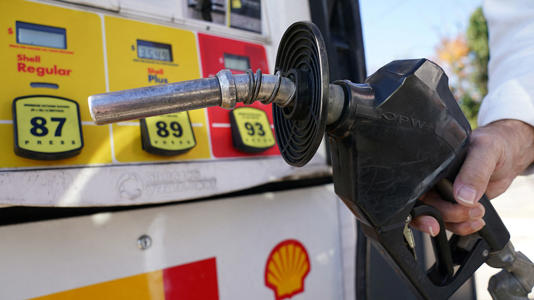In California, a forthcoming gas price surge of 50 cents per gallon within the next two years has come to light, as disclosed in a report by the state’s less publicized air quality regulator.
The California Air Resources Board (CARB), recognized as the state’s principal environmental overseer, divulged in September an anticipated rise in gasoline costs commencing next year, escalating by approximately 50 cents per gallon annually thereafter. Notably, this projected increase does not incorporate the existing gas tax within the state.
Republican State Senator Janet Nguyen, known for her vigilant stance on taxation matters, expressed concern over the covert nature of this impending tax escalation, highlighting its potential to burden a significant portion of Californians.
Nguyen remarked, “The middle class, the low income, they can’t afford gas to go to school, work, or grocery or the doctor’s office. No one knows about this. I think people just think it’s a tax, so they don’t know the difference between the carbon tax versus the state tax. It’s almost like a tax on the tax.”
The report indicates that the surge in gasoline prices is attributable to the reforms under the Low Carbon Fuel Standard established in 2007, foreseeing a rise of 47 cents in the upcoming year and an additional 52 cents by 2026. Concurrently, diesel prices may witness an increase of 59 cents this year and 66 cents within two years. Long-term projections extend to gasoline soaring by $1.15 and diesel by $1.50 per gallon from 2031 to 2046, with jet fuel costs expected to rise by $1.21.
Moreover, California is progressively phasing out new gas-powered vehicle sales and mandating 100% electric vehicle sales by 2035, a policy that has been adopted by nearly 20 other states, collectively impacting over 40% of the nation.
This concerted effort to electrify the transportation sector falls within the framework of the California Climate Commitment, unveiled by Governor Gavin Newsom two years ago. Under this initiative, the state is striving to reduce reliance on fossil fuels, expedite the deployment of renewable energy sources, slash greenhouse gas emissions by 85% by 2045, and curtail oil demand by an unprecedented 94%.
Governor Newsom reiterated the state’s commitment to combatting the climate crisis, emphasizing the imperative of undertaking substantial measures to mitigate pollution, stating in August 2022, “We can solve this climate crisis if we focus on the big, bold steps necessary to cut pollution.”








